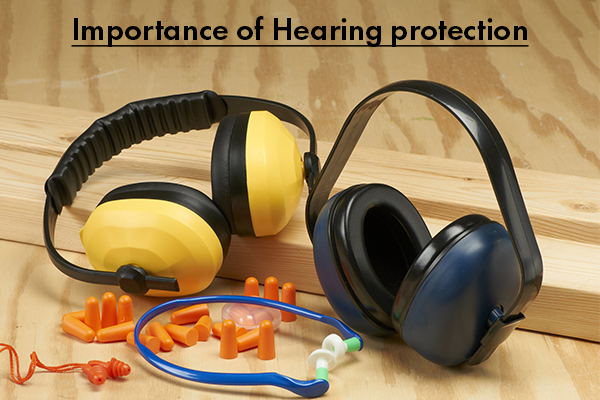Choosing the Right Shield: A Comprehensive Guide to Hearing Protection
Hearing is a precious sense that allows us to connect with the world around us. However, prolonged exposure to loud noises can damage our hearing permanently. This comprehensive guide empowers you to choose the right hearing protection, safeguarding your ears and preserving your auditory health.
Understanding the Threat: The Dangers of Noise Exposure
Noise is measured in decibels (dB). Continuous exposure to sounds exceeding 85 dB can cause hearing loss over time. Here’s a glimpse into the dangers of noise exposure:
- Gradual Hearing Loss: Chronic exposure to loud noises can lead to progressive hearing loss, making it difficult to hear conversations, music, or environmental sounds.
- Tinnitus: Persistent ringing or buzzing in the ears (tinnitus) can be a debilitating side effect of noise-induced hearing loss.
- Hyperacusis: Increased sensitivity to certain sounds can develop due to noise damage, making everyday noises uncomfortably loud.
Know Your Enemy: Evaluating Workplace and Recreational Noise Levels
The first step is to identify the situations where hearing protection is necessary. Common noisy environments include:
- Workplaces: Construction sites, factories, and workplaces with loud machinery often exceed safe noise levels.
- Recreational Activities: Concerts, sporting events, and using power tools at home can generate harmful noise levels.
- Personal Habits: Listening to music through headphones at high volumes can damage hearing over time.
Noise-measuring apps can be a helpful tool to assess noise levels in your environment. Knowing the decibel level helps you choose the appropriate level of noise reduction for your needs.
Guardians of Your Hearing: Types of Hearing Protection
Hearing protection comes in various forms, each with its advantages and considerations:
- Ear Plugs: These affordable, portable options insert directly into the ear canal. Foam ear plugs are disposable and convenient, while flanged or banded ear plugs offer a more secure and customizable fit.
- Ear Muffs: These cup-like protectors encompass the entire ear, offering a comfortable and effective noise-blocking solution. Ear muffs are ideal for environments with consistent noise levels, such as construction sites or shooting ranges.
- Electronic Earmuffs: These technologically advanced earmuffs provide hearing protection while allowing for ambient noise and conversation at safe levels. They are particularly helpful in situations where clear communication is crucial, such as hunting or working with loud machinery.
Noise Reduction Rating (NRR): Look for the NRR rating when choosing hearing protection. The NRR indicates the average amount of noise reduction (in decibels) the product provides. Higher NRR ratings offer greater protection but might not always be necessary depending on the noise level.
Choosing Your Champion: Matching Needs with Protection
Selecting the right hearing protection hinges on several factors:
- Noise Level: Match the NRR of the hearing protection to the noise level of your environment. For example, if you’re exposed to 90 dB noise, aim for hearing protection with an NRR of at least 15 dB to achieve a safe noise reduction level.
- Comfort and Wear Time: Consider how long you’ll be wearing the hearing protection. Ear muffs might be more comfortable for extended periods, while ear plugs offer portability and convenience for shorter durations.
- Environment: Certain environments might dictate your choice. Ear muffs provide better protection in windy environments, while ear plugs can be more practical for activities like swimming or using a helmet.
- Personal Preferences: Experiment with different types of hearing protection to find what suits your comfort and lifestyle best.
Beyond the Basics: Additional Considerations for Optimal Protection
- Fit is Crucial: Properly fitted hearing protection is essential for optimal noise reduction. Ensure ear plugs are inserted deeply and securely into the ear canal, and ear muffs create a complete seal around the ears.
- Double Up for Extreme Noise: In exceptionally loud environments exceeding 105 dB, consider combining ear plugs and ear muffs for maximum noise reduction.
- Replace When Necessary: Disposable ear plugs and ear muffs with worn-out cushions lose effectiveness. Replace them regularly to maintain optimal protection.
- Maintain a Culture of Safety: If working in a noisy environment, advocate for proper hearing protection protocols and encourage colleagues to use them consistently.
Frequently Asked Questions (FAQ)
- Can I use headphones as hearing protection?
Headphones are not designed for hearing protection and can actually damage your hearing if used at high volumes. While some noise-canceling headphones can reduce ambient noise, they are not a substitute for proper hearing protection in loud environments.






More Stories
Where to Watch USMNT vs Jamaica National Football Team
How I Met My Monster
How Should a Ring Fit